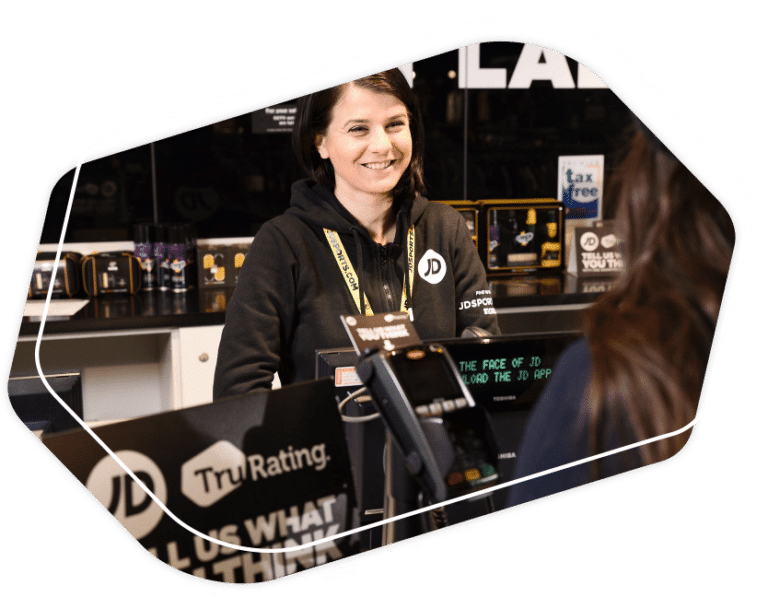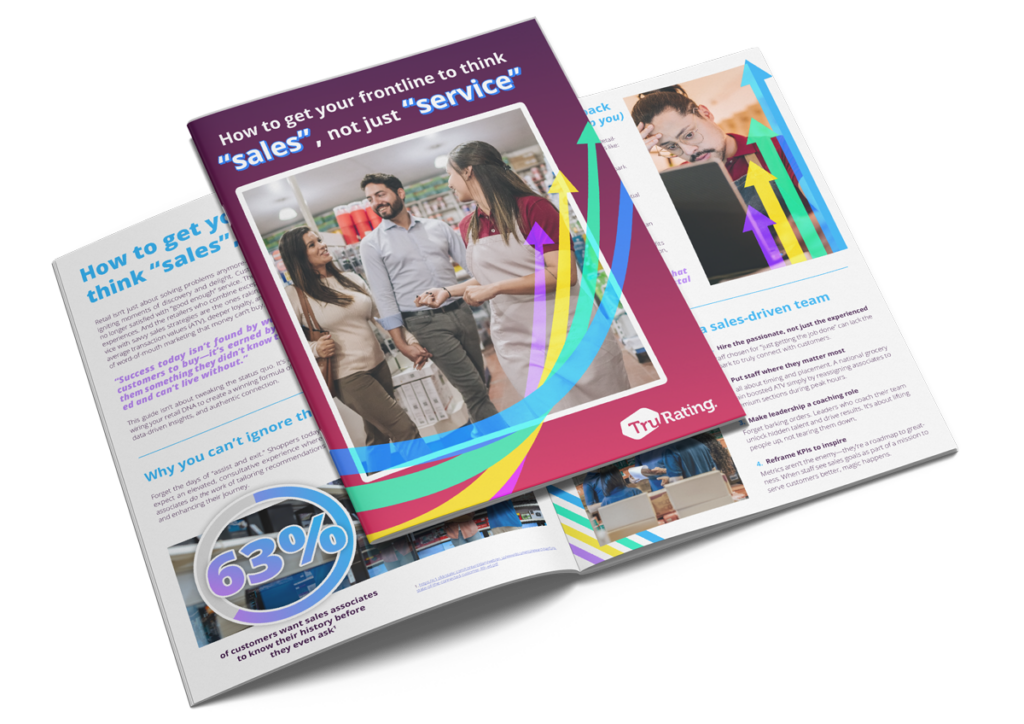1. Increase footfall – by getting more customers into the store
2. Increase conversion – by getting more customers to make a purchase once they are in the store
3. Increase basket size – by encouraging customers to add one more item to their basket while they are shopping
4. Increase repeat visits – by encouraging customers to return more often so that they make one extra visit across the year
5. Upsell – by encouraging customers to trade up to a more expensive item
For the final in this series – we’re going to take a look at the art of encouraging customers to ‘trade up’.
How to encourage customers to ‘trade up’
The final method to increase revenue which we’re going to look at here is the art of encouraging customers to choose a more premium product within a range of possible options – to put it simply, how to upsell, rather than just sell more.
This is a particularly important skill in sectors like footwear retail where getting customers to buy a second pair of shoes in the same visit is a pretty big ask while offering customers a second, cheaper, albeit complementary item, can often seem like a hard sell. If you remember from a previous article – offering additional items a customer doesn’t want, can actually have a negative impact on CX overall.
Of all the commonly deployed methods retailers use to encourage increased spend, skilfully engaging customers to trade up to a more premium item is the one where the role of in-store staff is of most importance. However, rather than just setting staff a somewhat arbitrary target to sell more from the top of the range – what if we could identify the staff behaviours that are most likely to encourage customers to trade up and focus our training there.
Measuring the impact of staff behaviour on customer spend
Working with a high-end footwear retailer that uses our services, we looked at the average item sales price vs the customer’s perception of staff friendliness, staff knowledge and whether staff made a specific recommendation.
We found that there was a significantly different impact in terms of spend, for each of these admittedly positive staff behaviours:

While it might not be a huge surprise that recommending items of a higher (or additional and relevant) value can increase spend – seeing the impact quantified, helped this retailer to really understand the impact of knowledgeable staff and focus their training, on the key driver of revenue in their stores.
The importance of passionate staff
While training staff to make recommendations can be a way to increased average item prices, we also soon found that customers won’t just accept any recommendation at face value. Their perception of the staff member plays a big part in the value they place on the recommendation and as a result how likely they are to take the staff member’s advice and trade up.
Working with the same retailer we looked at how different hiring practices at different stores impacted the effectiveness of staff recommendations. In new stores where the hiring practices were based on hiring staff purely for their retail experience rather than a passion for the brand recommendations only had a 2% impact while in the older stores where staff had originally been hired based predominately on their passion for footwear, the impact of recommendations was as much as 28% on the purchase price.
For retailers considering their approach to hiring it is important to recognize the impact authenticity and passion can have on both sales and customer experience. We would argue that on the basis that retail knowledge is a learnable skill it may well be best to hire staff based on their inherent passion for your brand and sector to maximise revenue.
Customers look for validation
In a final example from another fashion retailer, we looked at the different ways in which staff could help customers once they were in the changing room. Here we found that helping customers to ensure the best size fit was most likely to leads to customers spending more and increased item price by as much as 25%.
While there are many levers that can increase revenue and many approaches to activating each lever what ties all the examples above together is that those approaches that work in the long term are based on an authentic desire to meet the long term needs of the customer rather than to focus on artificial and often short-term revenue drivers for the retailer.
In the context of overall CX – perhaps the best investment you can make is ensuring you have staff who are able to understand, compliment and ultimately deliver on your customers’ needs. Depending on the model of your business, the products you sell or even the location of your stores – the type of customer behaviour you want to encourage will likely differ. But if you are able to invest in tools that help you understand how intricacies of how staff interactions, really impacts your bottom line – you’ll be well placed to see wins in the long run.
Useful resources
- Predictive analytics in retail – examples and strategies
- Phygital in retail — bridging the gap between physical and digital CX
- Retail pricing optimization – strategies, models and examples
- Business intelligence in the retail industry – strategies and trends
- The difference between multichannel and omnichannel retailing












